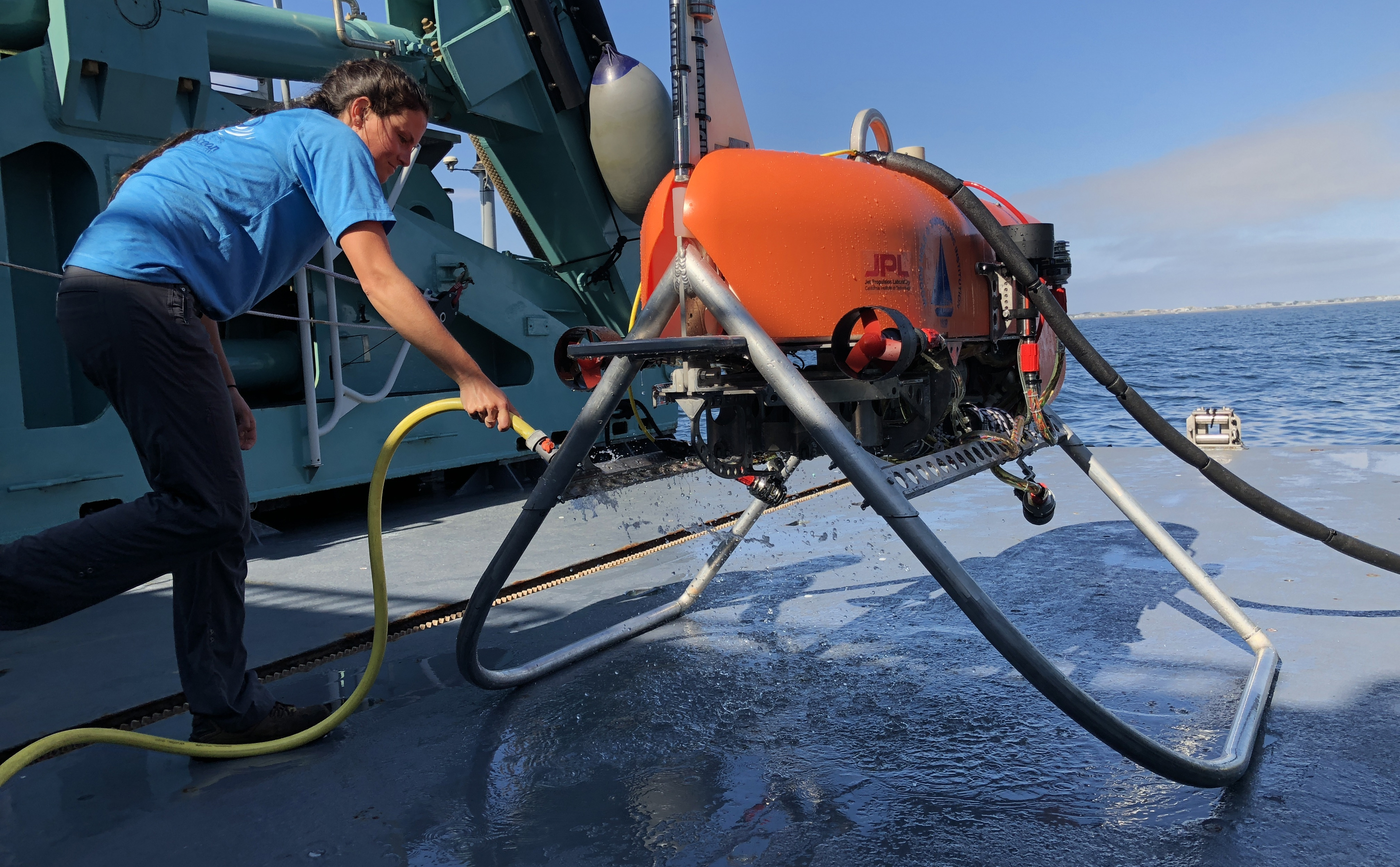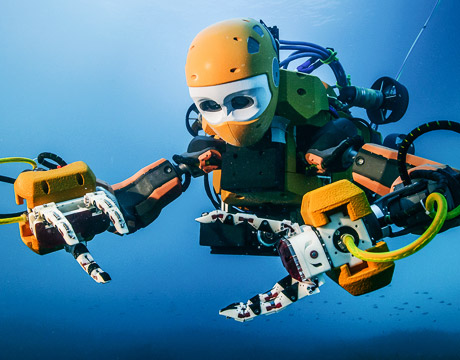Exploring the Depths: The Pioneering Advances in Deep Sea Exploration
The abyssal depths of Earth's oceans are among the last unexplored frontiers on our planet. Cloaked in perpetual darkness and subjected to extreme pressures, these mysterious expanses have long evaded detailed scrutiny due to the tremendous technological challenges they present. Today, however, a new era of deep-sea exploration is unfolding, driven by pioneering advances in robotics, data processing, and materials science. These advancements are not just illuminating the darkest corners of our marine landscapes but also opening up possibilities for resource discovery, biological research, and expanding our understanding of life's resilience.
Until those recent innovations, expeditions to the deep sea were scarce and often perilous. Manned submersibles, such as the famed Trieste which in 1960 descended to the Mariana Trench—the deepest known point in the Earth's seabed—were limited by the immense pressures capable of crushing conventional submarines. But the landscape began to change with the introduction of remotely operated vehicles (ROVs) and autonomous underwater vehicles (AUVs).
ROVs, tethered to ships with high-strength cables, served as robotic extensions of human capabilities, providing eyes and manipulative abilities at depths and situations too hostile for human presence. AUVs, on the other hand, operate without direct human control or tethers, allowing for greater mobility and the ability to conduct more extensive surveys of ocean floors. These robotic explorers have been employed to capture unprecedented imagery, collect samples, and even assist in recovering sunken artefacts.
But perhaps one of the most significant advancements in deep-sea exploration is in the realm of materials science. The development of stronger, more pressure-resistant materials has led to an increase in the depth that submersibles can function safely. New composite materials and innovative designs are leading to manned submersibles that are more compact, energy-efficient, and capable of withstanding pressures found at depths of 11,000 meters or more, enabling humans to sit within a protective sphere and bear witness to the wonders hidden beneath the waves.
One emblematic example of such technological progress is the touchdown of the DSV Limiting Factor, a submersible that undertook multiple manned dives to the Mariana Trench’s Challenger Deep in 2019. This feat showcased not just the technical prowess necessary to withstand the pressure of 1,086 bars—roughly equivalent to 50 jumbo jets piled on top of a person—but also marked a step forward in making deep-sea exploration more replicable and systematic, rather than an extraordinary one-off event.
Data processing and analytics have also advanced to where massive amounts of information collected by sonar, cameras, and other sensors can be processed more quickly and precisely than ever before. Cutting-edge software now enables scientists to create detailed 3D maps of the seabed, detect anomalies, and analyze ecological data in real-time, significantly expanding our knowledge of underwater geology and marine biology.
Uncovering marine biodiversity at these depths unveils organisms surviving in ways that redefine our understanding of biology. Life forms like the snailfish, which thrives at 8,000 meters below the waves, reveal the adaptability of organisms to extreme environments, hinting at the existence of entirely new ecosystem dynamics. Moreover, deep-sea microbiomes are under the spotlight for their unique metabolic processes, some of which are already being harnessed for applications in medicine and environmental biotechnology.
The incentivization behind deep-sea exploration encompasses not just the pursuit of scientific knowledge but also practical considerations. Deep seabed mining is gaining attention as land-based mineral resources become increasingly scarce and our technological society seeks new sources of rare earth elements and other critical materials for electronics, renewable energy, and batteries. The stakes are high, both in terms of potential economic gains and ecological risks, underscoring the complex balance between human enterprise and environmental stewardship.
The Ethical Dilemma of Exploiting the Deep Sea
As we dig deeper into the ocean floor, the conundrum of exploiting deep-sea resources while preserving the intricate and poorly understood ecosystems is becoming starker. The prospect of deep-sea mining, particularly, has become a focal point for this ethical debate. On one hand, the deep sea holds vast quantities of polymetallic nodules, manganese crusts, and seafloor massive sulfides rich in copper, nickel, cobalt, and rare earth metals that could meet global demands for decades or even centuries. On the other, the potential disruptions to an ecosystem that has remained untouched for millennia could be catastrophic and irreversible.
Proponents of deep-sea mining argue that technology can mitigate environmental impacts and that sourcing minerals from the depths could alleviate the heavy burden placed on terrestrial ecosystems by conventional mining. Critics counter that the risks remain unpredictably high. They warn that sediment plumes generated by mining operations could spread across vast areas, smothering marine life and disrupting food chains. The removal of nodules and crusts, which provide habitat complexity and substrates for deep-sea organisms, would alter the ecosystem fundamentally. Moreover, because deep-sea ecosystems recover at glacially slow rates due to slow growth rates and long lifespans of deep-sea species, any damage inflicted could effectively be permanent on human timescales.
A major challenge lies in the governance of these international waters. The United Nations Convention on the Law of the Sea (UNCLOS) established the International Seabed Authority (ISA) to regulate mineral-related activities, ensuring that deep-sea mining benefits humanity as a whole. However, the ISA has faced criticism over transparency issues and potential conflicts of interest, as well as for the perceived inadequacy of its environmental protection measures.
While the regulatory framework progresses slowly, the scientific community is racing ahead to fill in the numerous gaps in our knowledge of deep-sea ecology. Projects like the Ocean Discovery XPRIZE have incentivized innovation in autonomous exploration and rapid seabed mapping. Scientific cruises frequently return with reports of new species and biomes that defy conventional understanding. Taxonomic studies of the strange fauna of the deep, such as the yeti crab or the osedax worm, which feeds on whale carcasses, contribute to the wonderment and caution that should guide our actions in these environments which are as foreign as the surface of another planet.
It’s not only the living that captivate the attention of deep-sea explorers. Geologists are entranced by hydrothermal vent systems, also known as "black smokers," which are mineral-rich and support unique life forms that thrive without sunlight, using chemosynthesis instead. These sites not only offer insights into early life on Earth but might also parallel conditions on celestial bodies, further fueling astrobiological research.
As the technological platform from which we peer into the darkness becomes ever more sophisticated and robust, with innovations in artificial intelligence and machine learning poised to further accelerate our exploratory reach, the call for responsible stewardship also grows louder. Initiatives aiming to declare protected marine areas and restrictions on mining are gaining traction, advocating for a more cautious approach to exploiting these untouched habitats.
Underpinning all these activities is the unquenchable human thirst for discovery. The deep sea has much to teach us, from unraveling the secrets of the Earth’s geological past to unlocking hidden biochemical pathways that could lead to new medicines or biodegradable materials. But perhaps its most crucial lesson is one of humility; the ocean, in its vastness and mystery, is a clear reminder of the small place that humans occupy in the grand tapestry of life.
Advancing with a spirit of reverence and caution could not only protect the splendors of the deep sea but also ensure that their benefits, whether scientific, medical, or material, enrich our societies in a way that is equitable and sustainable. The fascination with our planet’s marine abysses holds a mirror to our own nature, reflecting a duality of ambition and vulnerability. It is a venture into the unknown that puts our capacity for wisdom and stewardship to the test, calling for a balance between the hunger for exploration and the need for conservation. As we stand on this precipice, perhaps the most pertinent question is not what lies below, but rather, what path we choose to forge as we venture into the depths.








Comments